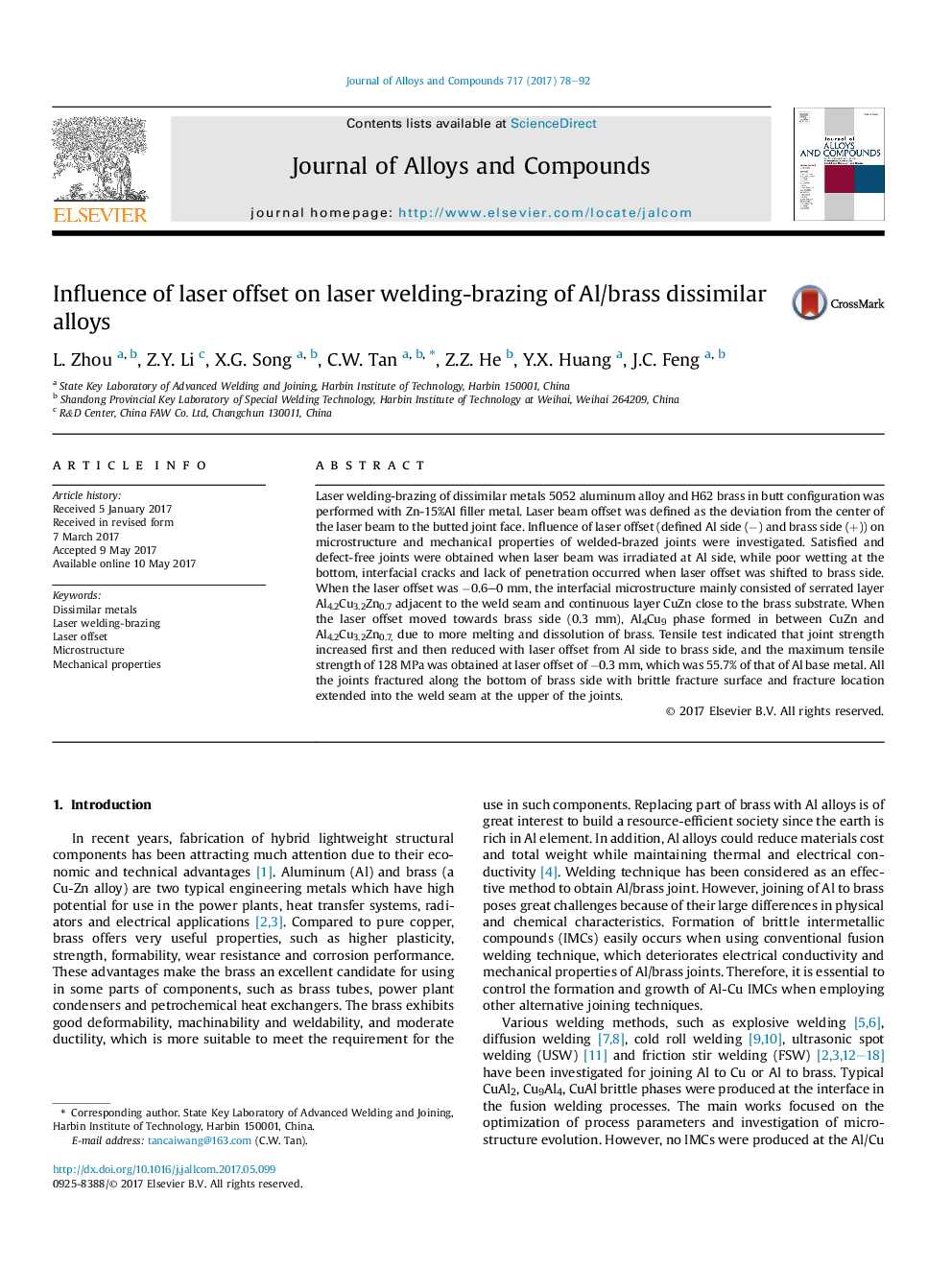| Article ID | Journal | Published Year | Pages | File Type |
|---|---|---|---|---|
| 5458988 | Journal of Alloys and Compounds | 2017 | 15 Pages |
Abstract
Laser welding-brazing of dissimilar metals 5052 aluminum alloy and H62 brass in butt configuration was performed with Zn-15%Al filler metal. Laser beam offset was defined as the deviation from the center of the laser beam to the butted joint face. Influence of laser offset (defined Al side (â) and brass side (+)) on microstructure and mechanical properties of welded-brazed joints were investigated. Satisfied and defect-free joints were obtained when laser beam was irradiated at Al side, while poor wetting at the bottom, interfacial cracks and lack of penetration occurred when laser offset was shifted to brass side. When the laser offset was â0.6-0 mm, the interfacial microstructure mainly consisted of serrated layer Al4.2Cu3.2Zn0.7 adjacent to the weld seam and continuous layer CuZn close to the brass substrate. When the laser offset moved towards brass side (0.3 mm), Al4Cu9 phase formed in between CuZn and Al4.2Cu3.2Zn0.7, due to more melting and dissolution of brass. Tensile test indicated that joint strength increased first and then reduced with laser offset from Al side to brass side, and the maximum tensile strength of 128 MPa was obtained at laser offset of â0.3 mm, which was 55.7% of that of Al base metal. All the joints fractured along the bottom of brass side with brittle fracture surface and fracture location extended into the weld seam at the upper of the joints.
Related Topics
Physical Sciences and Engineering
Materials Science
Metals and Alloys
Authors
L. Zhou, Z.Y. Li, X.G. Song, C.W. Tan, Z.Z. He, Y.X. Huang, J.C. Feng,
